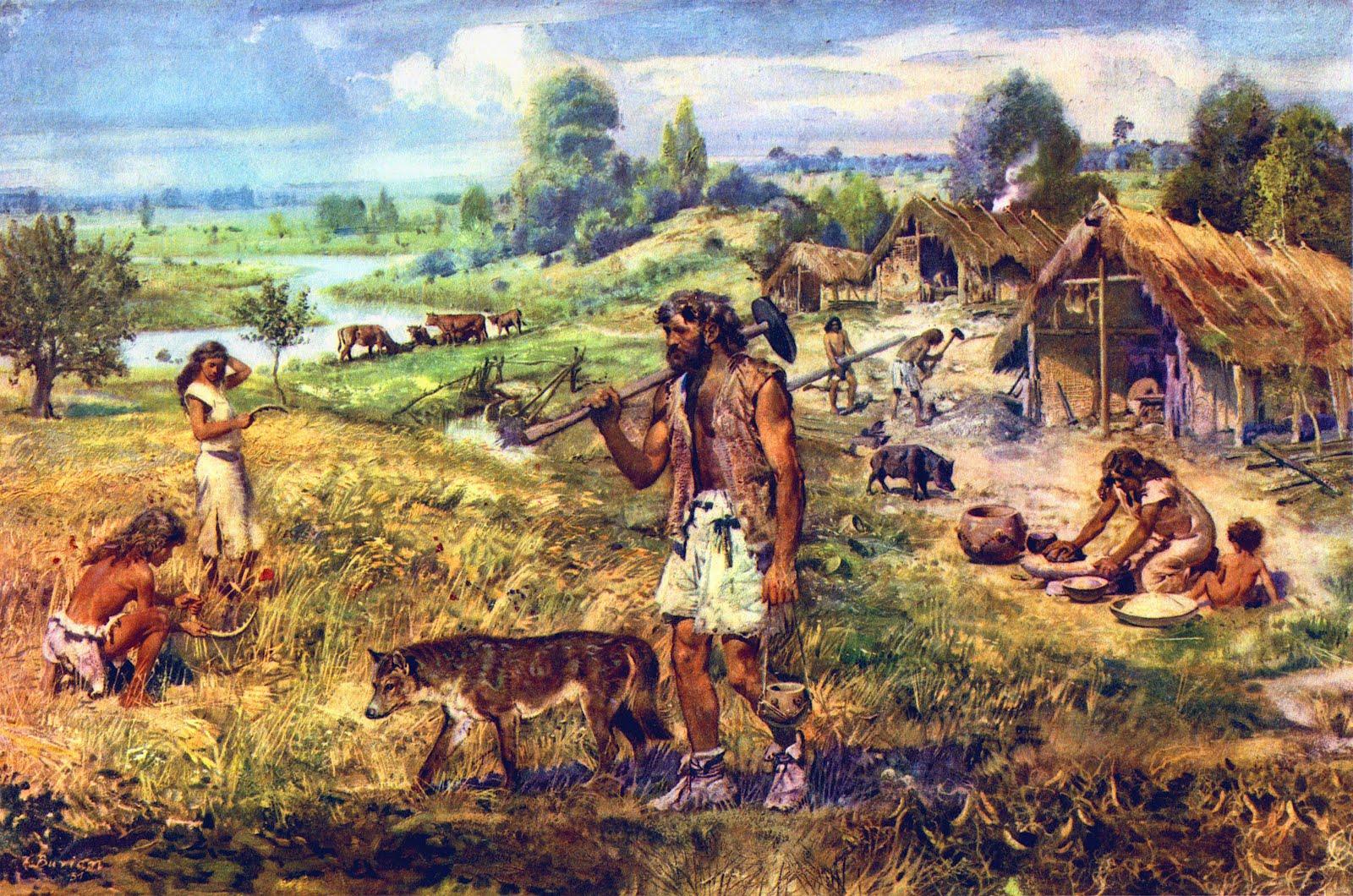
The Development of Early Agriculture and Its Impact on Civilization
The Neolithic Revolution, often referred to as the Agricultural Revolution, stands as a pivotal moment in human history. This transformative period, beginning roughly 10,000 years ago, witnessed a profound shift from nomadic hunter-gatherer lifestyles to settled agricultural communities. This transition, far from being a simple technological advancement, unleashed a cascade of consequences that reshaped human societies, cultures, and environments in profound and lasting ways. The development of early agriculture wasn’t a singular event but rather a complex process unfolding independently in various parts of the globe, each shaped by unique environmental conditions and cultural practices. This essay will explore the origins of early agriculture, its impact on population dynamics, the rise of complex societies, its environmental consequences, its enduring legacy in modern times, and the challenges it faces in a rapidly changing world.
The Origins of Early Agriculture: A Diverse Tapestry
The shift to agriculture wasn’t a sudden, global phenomenon. Instead, it emerged independently in several regions across the globe, each exhibiting its own unique characteristics and timelines. While the Fertile Crescent, a region encompassing parts of modern-day Iraq, Syria, Lebanon, Palestine, Israel, and Jordan, often takes center stage in discussions of early agriculture, it is crucial to recognize the independent development of agriculture in other parts of the world.
The Fertile Crescent, blessed with a naturally fertile environment and a diverse array of wild plant and animal species, provided ideal conditions for the domestication of wheat, barley, lentils, sheep, goats, and cattle. Evidence suggests that early agricultural practices in this region date back to around 9,500 BCE. Archaeological findings, including the remains of early settlements and cultivated plants, provide compelling evidence of this early agricultural revolution. The gradual development of irrigation systems further enhanced agricultural productivity, allowing for larger surpluses and the growth of settled populations.
Meanwhile, independent developments took place in other regions. In East Asia, the domestication of rice in the Yangtze River valley around 8,000 BCE marked a significant turning point. The cultivation of rice provided a staple food source, supporting dense populations and influencing cultural practices. Similarly, in Mesoamerica, the domestication of maize (corn) around 7,000 BCE played a crucial role in the development of complex societies such as the Olmec and Maya civilizations. The independent domestication of different crops in various regions highlights the ingenuity and adaptability of human societies in harnessing their local environments. Other crucial areas for early agricultural development include the Andes Mountains, where potatoes and other Andean crops were domesticated; sub-Saharan Africa, with the cultivation of sorghum and millet; and the southeastern United States, with the domestication of squash and beans. These diverse origins reveal the multifaceted nature of the Neolithic Revolution and the lack of a single, universally applicable narrative. The development of agriculture in each region was shaped by specific environmental factors, local plant and animal species, and the cultural practices of the inhabitants.
The Impact of Early Agriculture on Population Growth: A Demographic Transformation
The development of early agriculture had a profound and far-reaching impact on human population dynamics. Prior to the advent of agriculture, hunter-gatherer societies typically maintained small, relatively mobile populations constrained by the availability of wild resources. The unpredictable nature of hunting and gathering meant that population growth was naturally limited.
Agriculture, however, fundamentally altered this dynamic. The ability to cultivate crops and domesticate animals provided a more reliable and abundant food source, leading to a significant increase in food security. This surplus food production allowed for a dramatic increase in population density. Settled agricultural communities could support much larger populations than previously possible. As food surpluses allowed people to specialize in non-agricultural activities, the population could grow faster. This surplus also allowed for social stratification as some people gained more wealth and power from this system.
Archaeological evidence provides compelling support for this population explosion. The growth of early agricultural settlements into larger villages and eventually cities reflects the increasing capacity of agricultural systems to support burgeoning populations. Population density increased dramatically in areas where agriculture flourished, resulting in denser concentrations of people and the formation of more complex social structures. The increased availability of food also led to improved nutritional status, contributing to overall health and longevity, which further fueled population growth. This dramatic increase in population had significant implications for human societies, setting the stage for the development of complex social organization, urbanization, and the rise of civilizations.
The Role of Early Agriculture in the Emergence of Complex Societies: Beyond Subsistence
The development of agriculture was not merely a means of subsistence; it served as a catalyst for the emergence of complex societies. The surplus food produced by agriculture allowed for specialization of labor, a defining characteristic of complex societies. Individuals were no longer solely occupied with food production; instead, they could devote their time and skills to other activities, such as crafting, pottery, metalworking, and governance. This specialization of labor led to increased productivity and technological innovation.
Furthermore, agriculture facilitated the development of social hierarchies. The accumulation of surplus resources created inequalities in wealth and power. Elites emerged, often controlling access to land, water, and other essential resources. This led to the development of more centralized political structures, such as chiefdoms and eventually states. The construction of irrigation systems, temples, and other large-scale projects required coordinated labor and centralized authority, further solidifying the emergence of complex societies.
The growth of cities as population centers was directly linked to the development of agriculture. Cities provided a focal point for trade, social interaction, and cultural exchange. The concentration of people in urban settings fostered cultural innovation and specialization, contributing to the complexity and sophistication of these societies. In essence, agriculture provided the foundation for the development of complex societies by supporting larger, denser populations, enabling specialization of labor, and facilitating the formation of social hierarchies and centralized political structures.
The Impact of Early Agriculture on the Environment: A Double-Edged Sword
The advent of agriculture had a profound impact on the environment, creating a complex and often paradoxical relationship between human societies and their surroundings. While agriculture increased food production and supported larger populations, it also resulted in significant environmental alterations. The clearing of forests for farmland led to deforestation and habitat loss. Intensive agricultural practices often resulted in soil erosion and depletion. Irrigation systems, while initially beneficial, could lead to salinization of soils, rendering them less fertile over time. The domestication of animals also had environmental consequences, leading to overgrazing and the alteration of natural ecosystems.
However, it’s important to avoid a solely negative portrayal of the environmental impact of early agriculture. In many cases, early agricultural practices were surprisingly sustainable. Traditional farming techniques, such as crop rotation and the use of natural fertilizers, helped maintain soil fertility. Indigenous knowledge and practices often promoted biodiversity and ecosystem resilience. The long-term sustainability of agricultural systems varied considerably across different regions and depended on factors such as environmental conditions, population density, and agricultural practices. The impact of agriculture on the environment was a dynamic and complex process, involving both destructive and constructive elements.
The Legacy of Early Agriculture in Modern Societies: A Continuing Influence
The legacy of early agriculture extends far beyond the Neolithic period and continues to shape our modern world. Agriculture remains the foundation of our food systems, providing sustenance for billions of people across the globe. The development of early agriculture also laid the groundwork for many of the social, economic, and political structures that we see today. The emergence of settled communities, social hierarchies, and centralized governance all have their roots in the agricultural revolution.
However, modern agriculture faces significant challenges. The industrialization of agriculture, while dramatically increasing food production, has also led to environmental degradation, biodiversity loss, and the unsustainable use of resources. The reliance on chemical fertilizers and pesticides, as well as intensive irrigation practices, has had detrimental effects on ecosystems and human health. Climate change further exacerbates these challenges, threatening crop yields and increasing the vulnerability of agricultural systems.
To address these challenges, a shift towards more sustainable agricultural practices is crucial. Agroecology, organic farming, and other sustainable agricultural methods aim to promote environmental sustainability, social justice, and long-term food security. These approaches emphasize the importance of biodiversity, soil health, and water conservation, while minimizing the use of synthetic inputs. The legacy of early agriculture is complex, encompassing both the remarkable achievements of early farming communities and the challenges faced by modern agriculture. Addressing these challenges requires a nuanced understanding of the historical and ecological dimensions of agriculture, combined with innovative solutions and a commitment to sustainable practices.
The Future of Early Agriculture in a Changing World: Navigating Uncertainty
The future of agriculture will be shaped by a confluence of factors, including climate change, population growth, and technological innovation. The growing global population demands an increase in food production, while climate change threatens agricultural yields through extreme weather events, shifting rainfall patterns, and rising temperatures. These challenges require innovative solutions and a reevaluation of traditional agricultural practices.
Technological advancements hold the potential to improve agricultural efficiency and sustainability. Precision agriculture, utilizing technologies such as GPS and sensors, can optimize resource use and reduce environmental impact. Vertical farming and other innovative approaches can increase food production in urban settings. However, the adoption of new technologies must be equitable and accessible, ensuring that their benefits reach all segments of society.
Beyond technology, the future of agriculture will require a greater focus on sustainable practices. Agroecology, which integrates ecological principles into agricultural systems, offers a promising approach. This approach emphasizes biodiversity, soil health, and integrated pest management. Organic farming, which avoids the use of synthetic pesticides and fertilizers, also contributes to environmental sustainability. These approaches, combined with policies that promote sustainable agricultural practices, are crucial for ensuring food security in a changing world.
The future of agriculture will also depend on addressing social and economic inequalities. Smallholder farmers often lack access to resources and technologies that could enhance their productivity and resilience. Supporting smallholder farmers and fostering equitable access to resources are essential for achieving sustainable and inclusive food systems.
In conclusion, the development of early agriculture was a watershed moment in human history, setting the stage for the emergence of complex societies, urbanization, and dramatic population growth. While agriculture has provided the foundation for human civilization, it also carries a complex environmental legacy. The future of agriculture will require a concerted effort to address the challenges posed by climate change, population growth, and resource scarcity, while promoting sustainable practices and ensuring equitable access to food for all. Understanding the historical trajectory of agriculture provides crucial insights into the present and future of our global food systems. By embracing sustainable practices and promoting equitable access to resources, we can strive to create food systems that support both human well-being and the health of our planet.


